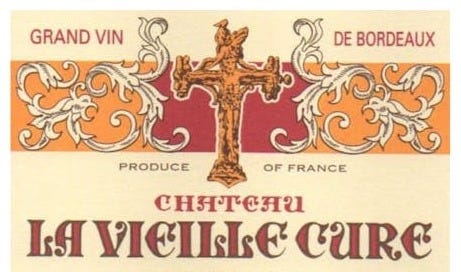Fronsac, located west of Saint-Émilion and Pomerol, is often overshadowed by its more famous neighbors, but it has a long history of producing high-quality wines. Known for its bold, structured reds, Fronsac offers some of the best value in Bordeaux, with wines that reflect the Right Bank’s signature style of Merlot dominance, complemented by the structure of Cabernet Franc. With its picturesque rolling hills and limestone-rich soils, Fronsac is a hidden gem for those seeking wines with depth, character, and excellent aging potential at an accessible price point.
Primary Grape Varieties
Merlot The dominant grape, providing ripe fruit flavors, plush texture, and a rounded profile.
Cabernet Franc Adds structure, freshness, and aromatic complexity, enhancing the wine’s aging potential.
Cabernet Sauvignon Used in smaller amounts, contributing tannic strength and dark fruit flavors.
What Makes Fronsac Special
Limestone and Clay Soils
Fronsac’s terroir is defined by its limestone plateau and clay-rich slopes, similar to Saint-Émilion. The limestone contributes minerality and freshness, while the clay promotes the development of Merlot’s ripe fruit character. Together, these soils create wines with both richness and structure, making them balanced and age-worthy.Value and Potential
While Fronsac lacks the prestige of Saint-Émilion or Pomerol, it often produces wines of comparable quality at a fraction of the cost. Many producers in Fronsac are focused on crafting wines that showcase their terroir, resulting in expressive and authentic Bordeaux wines that deliver exceptional value.Historical Significance
Fronsac has a deep winemaking history, once considered among Bordeaux’s most prestigious regions during the 17th and 18th centuries. Its proximity to the Dordogne River facilitated trade and established its reputation, which modern producers are now reviving with renewed focus on quality.
Tasting Notes for Blind Tasting
Fronsac wines typically exhibit flavors of black plum, blackberry, and dark cherry, with notes of cedar, licorice, and graphite. The wines are full-bodied with firm tannins and a fresh mineral finish, making them both powerful and balanced.
Quiz Time
How do Fronsac’s limestone soils contribute to the wine’s structure and aging potential?
What differentiates Fronsac wines from those of neighboring Pomerol and Saint-Émilion?
Scoop your Daily Terroir shirt!
Premium Subscriber Content: Delving into Fronsac’s Terroir and Style
Terroir Insights
Fronsac’s limestone plateau plays a vital role in shaping its wines. The limestone enhances drainage and promotes deep root growth, which contributes to the concentration of flavors in the grapes. This soil also adds a distinct minerality and freshness to the wines, balancing Merlot’s richness.
Keep reading with a 7-day free trial
Subscribe to Daily Terroir: Exploring Wine Regions One Day at a Time to keep reading this post and get 7 days of free access to the full post archives.






